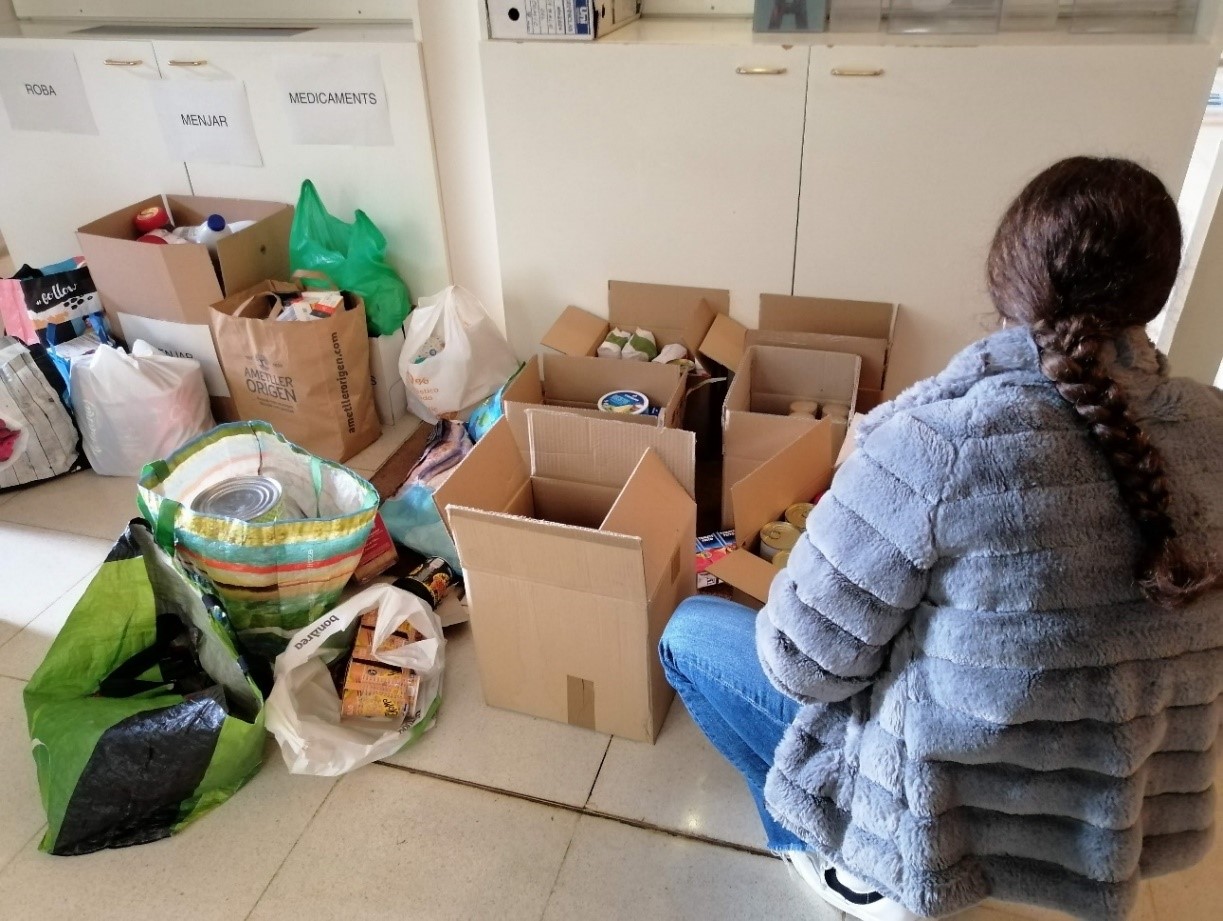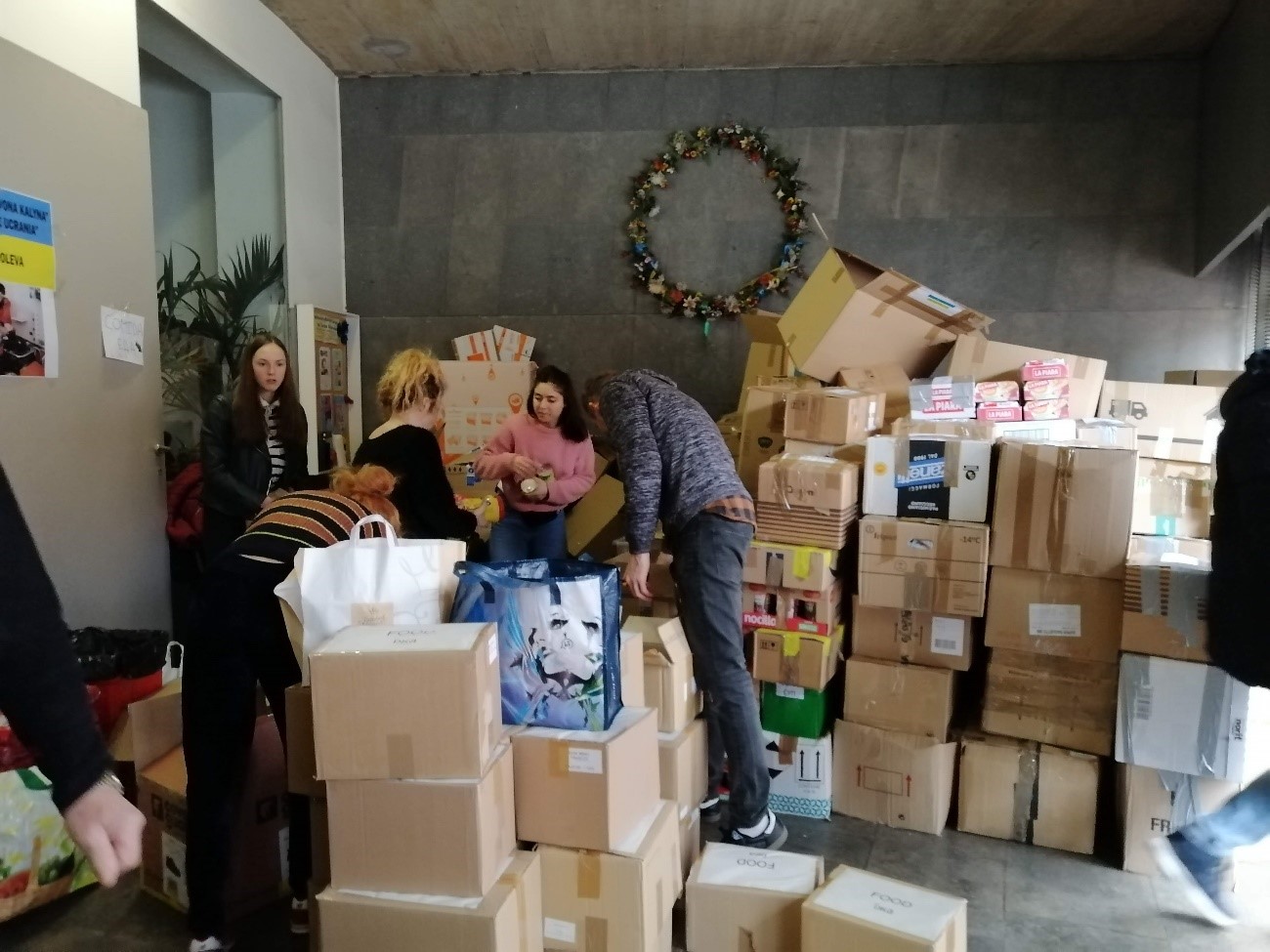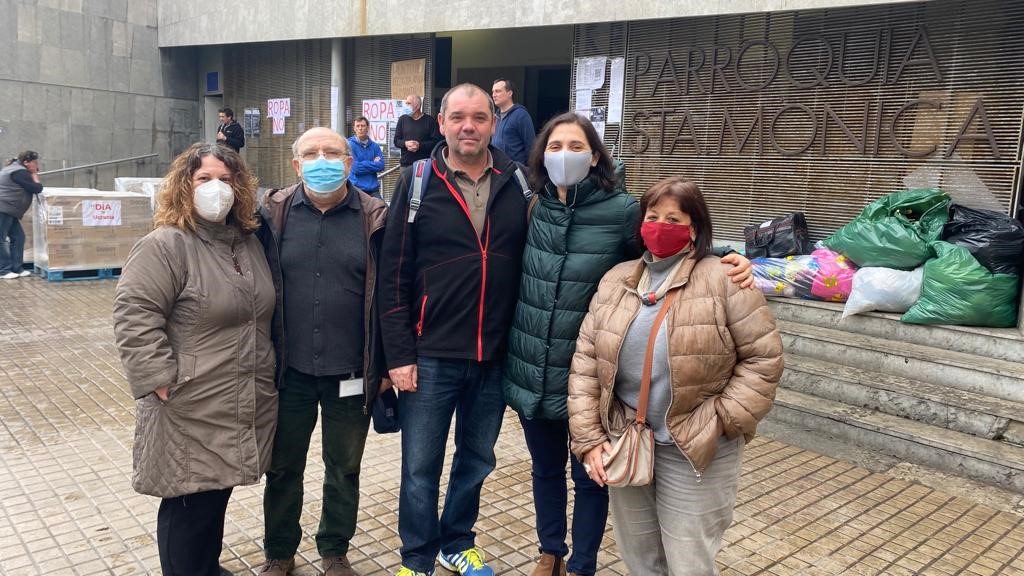Cristina Riera
These past few months we have been terribly shocked by the images and testimonies that have reached us from Ukraine with the outbreak of war. It is dramatic to see how people who have been trapped in their towns survive. At the same time, another tragedy is the more than six and a half million refugees who have fled the bombs since the beginning of the conflict, bombs that are causing countless human losses and the devastation of entire cities.
On the one hand, we keep seeing families separated by the exodus of women and children, homes on fire, hospitals and schools destroyed, women having to give birth in bunkers where they can get away from the bombings, the elderly who are unable to get down to the refuges when the sirens go off, or the sick who are unable to follow their treatments. In addition, there are cities without running water, electricity or heating in sub-zero temperatures and a shortage of food and medicine.
On the other hand, works of art have not been able to escape the war and are in danger of being bombed. In recent months we have been able to see images of how works of art are moved from churches or how monuments are protected with sandbags. Many museums have called for help to safeguard the cultural heritage they preserve. Most of their rooms and galleries are empty, given that those works of art, quickly packaged, have been hidden in secret bunkers or even moved to foreign countries to ensure their survival. UNESCO is working with local authorities and museum directors to mark monuments and historical sites with the Blue Shield, an emblem established in 1954 during The Hague Convention indicating the art to be protected in the event of armed conflict.
In short, wherever you look, only a bleak picture can be seen.
The Museu Nacional and its workers, who are always engaged in social issues, are opposed to the violence of the Ukrainian war. For this reason, as soon as the conflict broke out, the staff of the Museum launched a solidarity campaign to collect humanitarian aid for the Ukrainian people. We inquired about what they needed and put together a poster specifying the products people were advised to bring.

As you can see below, the response was spectacular. Many people participated. We sorted all the material into boxes according to their typology and labelled them in English and Ukrainian to facilitate the work of the volunteers who participate daily in the classification, transfer and distribution of all this material.

We managed to collect the following material and equipment:
- 25 boxes of food (biscuits, tinned food, cocoa powder, flour, tea, oil, rice, milk, chocolate and pulses)
- 9 boxes of clothes (sleeping bags, blankets, gloves, wool hats and jackets)
- 2 boxes of hygiene products (nappies, sanitary towels and masks)
- 1 box of medicines and other pharmaceutical products (sterile gauze, paracetamol, ibuprofen, amoxicillin and alcohol)
- 1box of batteries and torches
- 1 box with shoes

There are different collection points in Barcelona. We took the material to the church of Santa Monica, where we were amazed at its good organisation. As soon as they arrived, a group of men came to unload the boxes from the cars and take them into the premises, where other people were sorting the material that people were bringing.

Ivan and Taras, two Ukrainian collaborators, told us how they get the material to Ukraine. First, they select the medicines and they take them to Poland, where they change vehicles to enter Ukraine. Transfers are made by van, as it is much faster and they can reach Krakow in 24 hours. It takes 3 or 4 days for the same journey to be done by truck. Regarding the rest of the material (food, clothes, etc.), the transfer is done by truck. If the people driving them are Ukrainian, the trip is done directly from Barcelona to the interior of Ukraine. But if the drivers are of other nationalities, for fear of bombing, they usually do not want to cross the border, so the material is changed to other trucks in Polish cities near Ukraine. The towns where all this material is delivered, to be distributed among the population, are the ones most punished by the bombings, such as Kharkiv, the second largest city in the country.

In conclusion, we want to convey our support to the people of Ukraine who are suffering greatly and who in many cases have lost everything. The unanimous feeling of all of us is that it has been very gratifying to participate in a solidarity campaign like this and put our grain of sand to help them. The main wish is for this war to end soon.
Departament de Comunicació







